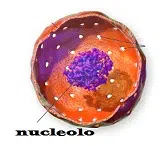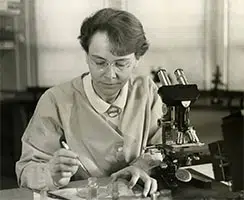 The term nucleolus , which can also be mentioned as nucleolus (with an accent on the E ), comes from the Latin word nucleŏlus . The concept is used in the field of biology to refer to an organelle of cells .
The term nucleolus , which can also be mentioned as nucleolus (with an accent on the E ), comes from the Latin word nucleŏlus . The concept is used in the field of biology to refer to an organelle of cells .
Organelles are functional and structural units of cells. In the case of nucleoli, they are found inside the nucleus and allow the ribonucleic acid ( RNA ) of the ribosomes to be synthesized.
It is often said that the nucleolus is the area made up of RNA and proteins inside the nucleus . In this place, the generation of ribosomes occurs, other organelles that contribute to the union of amino acids for the production of proteins.
In the nucleolus, therefore, the different subunits that give rise to the appearance of ribosomes are transcribed, processed and assembled. Although the synthesis and conformation of ribosomes is their most important function, nucleoli also perform other tasks: there are hundreds of proteins in these organelles that do not participate in the biogenesis of ribosomes.
It is important to mention, on the other hand, that the structure of the nucleolus is not delimited by a membrane . It is a dense or prominent area of the nucleus that is divided into several regions and is usually surrounded by heterochromatin.
Proteins associate and separate from nucleolus components frequently. That is why the nucleolus is described as a dynamic element.
According to various studies, viruses require the proteins that the nucleolus has to replicate. Therefore, when an infection occurs, the composition and morphology of the nucleolus are modified. The activity of the nucleolus, meanwhile, could also be related to the malignant proliferation of cells.
One of the concepts related to this is the nucleolar organizing region , whose acronym is NOR . This is the part of the chromosome in which the groups of ribosomal genes are located (the so-called rDNA ), which is associated with a secondary constriction. The NOR is found on a different number of chromosomes, depending on the species of eukaryote we are talking about.
 The chromosomes in which the nucleolar organizing regions are located are called SAT , precisely because the segment that exists between the aforementioned constriction and the tip of the chromosome is called the chromosomal satellite . Only some NORs in the cell have to be functionally active.
The chromosomes in which the nucleolar organizing regions are located are called SAT , precisely because the segment that exists between the aforementioned constriction and the tip of the chromosome is called the chromosomal satellite . Only some NORs in the cell have to be functionally active.
The North American scientist Barbara McClintock , Nobel Prize winner in Medicine or Physiology in 1983 whose specialization was cytogenetics, discovered in 1934 that only chromosomes with secondary constriction actively participated in the formation of nucleoli. Later, other prominent figures in the scientific field such as Ritossa and Spiegelman made important contributions to its discovery, such as the demonstration of the particular structure of the nucleolar organizing region.
One of the characteristics of the nucleolar organizing region is that they have transcription units that separate the so-called DNA spacers , which are not transcribed into RNA. They occupy a part of the short arms of five chromosomes (in our species, 13, 14, 15, 21 and 22, specifically) where there are an average of thirty-five complementary repetitions of a transcription unit and a DNA spacer (of 13 and 27 kb, respectively), in which the regulatory elements are found.
These regions participate in the organization of the nucleoli in eukaryotes and these, which are composed of proteins and ribosomal RNA, are in turn related to the generation of ribosomal subunits that are involved in protein synthesis. To carry out the differential staining of the NOR, silver impregnation can be used, for example.
